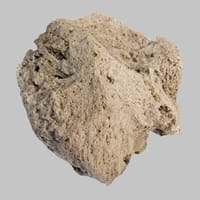Definition
Lignite is a soft brownish coal which shows traces of plants and is intermediate between bituminous coal and peat
Pumice is a volcanic rock that consists of highly vesicular rough textured volcanic glass, which may or may not contain crystals
Discoverer
Unknown
Unknown
Etymology
From French, Latin lignum wood + -ite1
From Old French pomis, from a Latin dialect variant of pumex
Class
Sedimentary Rocks
Igneous Rocks
Sub-Class
Durable Rock, Soft Rock
Durable Rock, Medium Hardness Rock
Group
Not Applicable
Volcanic
Other Categories
Coarse Grained Rock, Fine Grained Rock, Medium Grained Rock, Opaque Rock
Fine Grained Rock, Opaque Rock
Texture
Amorphous, Glassy
Vesicular
Color
Black, Brown, Dark Brown, Grey, Light to Dark Grey
Beige, Colourless, Grey, Light Green, Light Grey, Pink, White, Yellow- grey
Durability
Durable
Durable
Appearance
Veined or Pebbled
Vesicular
Interior Uses
Not Yet Used
Decorative Aggregates, Flooring, Homes, Interior Decoration
Exterior Uses
Not Yet Used
As Building Stone, As Facing Stone, Garden Decoration, Paving Stone
Other Architectural Uses
Not Yet Used
Curbing, Powder
Construction Industry
for Road Aggregate, Steel Production
As Dimension Stone, Cement Manufacture, for Road Aggregate, In landscaping and horticulture, Making natural cement, Production of lightweight concrete blocks
Medical Industry
Not Yet Used
As an abrasive in skin exfoliating products, In Chemical and Pharmaceutical Industry, Medicines and Cosmetics
Antiquity Uses
Not Yet Used
Artifacts
Commercial Uses
Electricity Generation
As a traction material on snow-covered roads, As an abrasive in pencil erasers, Fine abrasive used for polishing, Manufacture of Soap, Solvents, Dyes, Plastics and Fibres, Used in aquariums
Types
Xyloid Lignite or Fossil Wood and Compact Lignite or Perfect Lignite
Scoria
Features
Generally rough to touch, Helps in production of Heat and Electricity, Used as fossil fuel
Host Rock for Lead
Archaeological Significance
Monuments
Not Yet Used
Not Yet Used
Famous Monuments
Not Applicable
Not Applicable
Sculpture
Not Yet Used
Not Yet Used
Famous Sculptures
Not Applicable
Not Applicable
Figurines
Not Yet Used
Not Yet Used
Formation
Coal formation takes place due to accumulation of plant debris in a swamp environment. The Coal formation process continues, as peat turns into lignite brown or black coal at increasing heat and pressure.
Pumice rock forms when the magma cools so quickly that atoms in the melt are not able to arrange themselves into a crystalline structure.
Mineral Content
Not Available
Aluminum Oxides, Calcite, Carbonate, Iron Oxides, Silica
Compound Content
Carbon, Hydrogen, Nitrogen, Oxygen, Sulphur
Al, Aluminium Oxide, CaO, Carbon Dioxide, MgO, Silicon Dioxide
Types of Metamorphism
Not Applicable
Burial Metamorphism, Impact Metamorphism
Types of Weathering
Biological Weathering, Chemical Weathering, Mechanical Weathering
Biological Weathering, Chemical Weathering, Mechanical Weathering
Types of Erosion
Chemical Erosion, Water Erosion, Wind Erosion
Chemical Erosion, Coastal Erosion, Glacier Erosion, Sea Erosion, Water Erosion, Wind Erosion
Grain Size
Medium to Fine Coarse Grained
Fine Grained
Fracture
Conchoidal
Planar
Streak
Black
White, Greenish White or Grey
Porosity
Highly Porous
Highly Porous
Luster
Dull to Vitreous to Submetallic
Earthy
Compressive Strength
Not Available
Cleavage
Non-Existent
Perfect
Toughness
Not Available
3
Specific Gravity
1.1-1.4
2.86
Transparency
Opaque
Opaque
Density
800-801 g/cm3
0.25-0.3 g/cm3
Resistance
Heat Resistant
Impact Resistant, Pressure Resistant
Deposits in Eastern Continents
Asia
Bangladesh, Burma, Cambodia, China, India, Indonesia, Kazakhstan, Malaysia, Mongolia, Pakistan, Turkey, Vietnam
Afghanistan, Indonesia, Japan, Russia
Africa
Botswana, Kenya, Morocco, Mozambique, South Africa, Tanzania
Ethiopia, Kenya, Tanzania
Europe
Belgium, Bulgaria, England, France, Germany, Greece, Hungary, Kosovo, Netherlands, Norway, Poland, Romania, Serbia, Slovakia, Slovenia, The Czech Republic, Ukraine, United Kingdom
Greece, Hungary, Iceland, Italy, Turkey
Others
Not Yet Found
Not Yet Found
Deposits in Western Continents
North America
Canada, Mexico, USA
Bahamas, Barbados, Canada, Costa Rica, Cuba, Jamaica, Mexico, USA
South America
Brazil, Chile, Colombia, Venezuela
Argentina, Chile, Ecuador, Peru
Deposits in Oceania Continent
Australia
New South Wales, Queensland, Victoria
New Zealand, Western Australia
All about Lignite and Pumice Properties
Know all about Lignite and Pumice properties here. All properties of rocks are important as they define the type of rock and its application. Lignite belongs to Sedimentary Rocks while Pumice belongs to Igneous Rocks.Texture of Lignite is Amorphous, Glassy whereas that of Pumice is Vesicular. Lignite appears Veined or Pebbled and Pumice appears Vesicular. The luster of Lignite is dull to vitreous to submetallic while that of Pumice is earthy. Lignite is available in black, brown, dark brown, grey, light to dark grey colors whereas Pumice is available in beige, colourless, grey, light green, light grey, pink, white, yellow- grey colors. The commercial uses of Lignite are electricity generation and that of Pumice are as a traction material on snow-covered roads, as an abrasive in pencil erasers, fine abrasive used for polishing, manufacture of soap, solvents, dyes, plastics and fibres, used in aquariums.










